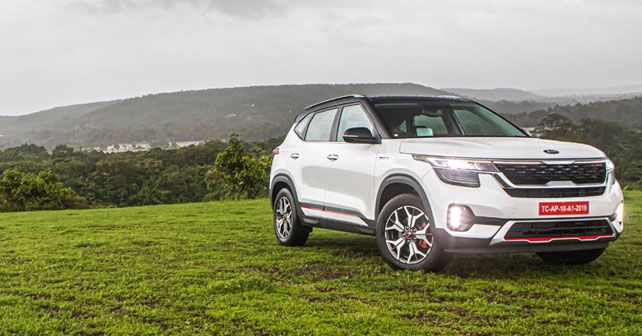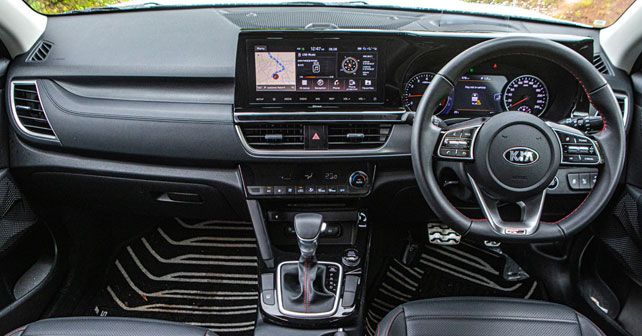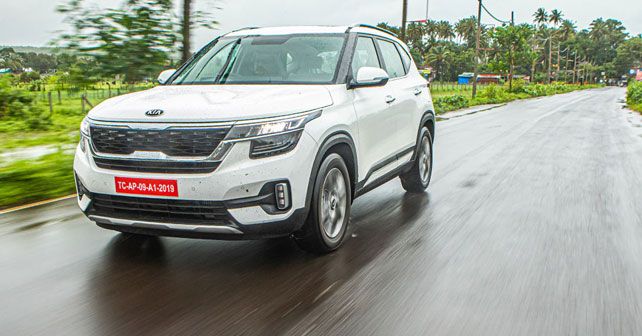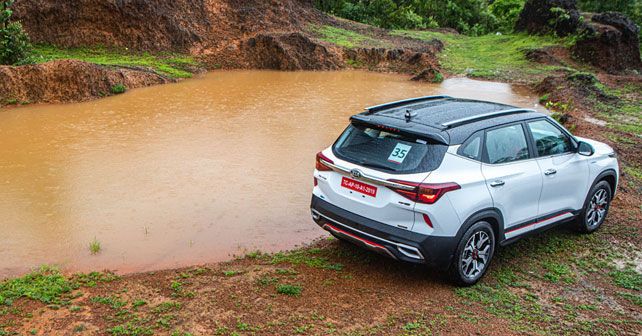
Kia created quite a buzz at the 2018 Auto Expo. And, with the Seltos, Kia is hoping to translate that buzz into sales success. We drive it in Goa, amidst a raging monsoon, to see if Kia can truly make a splash in the Indian market.
In the complicated world of automobile manufacturing, India holds a special place. It’s special because it’s known to be the burial ground for some of the biggest carmakers in the world – just ask General Motors.
Marked by unique demands, diverse geography and challenging infrastructure, and a lack of clarity in government policy, the Indian market offers a high degree of complexity to say the least. As the now-infamous Mr Carlos Ghosn once said to me over lunch, before the launch of the Kwid, ‘India is definitely one of the toughest, if not the toughest, markets in the world to understand and succeed in.’
The challenge
Considering that two manufacturers account for around 70% of the passenger car market in India, it’s clear that Kia Motors has its work cut out for it. To be honest, though, Kia has followed quite a deliberate strategy right from the day they announced their decision to enter the Indian market – their vast display at the Auto Expo made that apparent.
Subsequent to that, Kia managed to keep the buzz around the brand alive – highlighting its massive investment in India (over $1.1 billion at last count) to build a 3,00,000-unit plant in Anantapur, as well as to build anticipation and excitement for its first product, the Seltos SUV.
Enter the Seltos
The Seltos made its first appearance at the 2018 Auto Expo in the form of the SP2 concept, and it’s good to see that, by and large, Kia has stuck to the design of the concept car. As a result, what we get is a very attractive SUV that features many mature design touches to make it stand out in a crowded market.
The front end of the Seltos is particularly impressive – the huge ‘Tiger Nose’ grille, Kia’s design trademark, has a knurled aluminium finish, with a contrasting black plastic grille. Pair this with large sweeping headlights and turn indicators, along with vertically placed fog lamps, and the Seltos cuts a fine figure, with imposing road presence.
The profile of the Seltos also looks strong, with prominent shoulder lines that merge into the head and taillights. Two aspects stand out in the design, when viewed in profile. One, the large 17-inch wheels fill the wheel arches quite well, and, two, the roof rails are nicely executed, and the plastic cladding on the lower side of both doors is very well integrated too. Compared to the front and the sides, the rear seems a bit busy. Sure, it has large LED taillights, paired with a big chrome piece and that large roof spoiler, but, if you ask me, it’s got a few too many elements fighting for attention.
Of course, one of the unique features that Kia wants to introduce into the Indian market is the freedom to choose from a wide variety of trim options. The two broad trim lines on offer are the Tech Line – focused more on luxury – and the GT Line, which is sportier in terms of design. The GT Line has a distinct theme, marked by red highlights, which are present on the front and rear skid plates, brake calipers, wheels, and even the door cladding.
Similarly, the interior of the Tech Line gets a two-tone finish. The Tech Line does have the option of an all-black fabric interior, but only on some variants. The GT Line’s cabin, however, features the same red & black theme of its exterior design. The GTX test car that we tested had an all-black interior, with red highlights and contrast stitching, embellished by GT Line emblems on the front seats.
The GT Line can also be had in a two-tone silver finish, but I think that the all-black interior looks stunning – and perfectly complements its sporty design.
Packed to the brim
We tested two versions of the car, and the quality levels of both are simply phenomenal – from the plastics used and soft-touch surfaces to the digital screens and the general fit-and-finish, everything is simply class-leading.
The seats of the Seltos deserve special praise, as they are extremely comfortable. The torrential rain in Goa during our drive forced us to spend quite some time inside the cars – and let’s just say that we didn’t complain, not even for a minute. Now, combine this with features like a 10.25-inch touchscreen multimedia display, a 7-inch colour screen in the instrument console, a 360-degree camera, and a blind spot camera – it plays the video feed, from a camera mounted in the ORVM, on the 7-inch screen in front of the driver – which functions seamlessly, and it’s pretty clear that the Seltos has changed the benchmark for the Indian market in terms of features and quality.
Depending on the trim version you choose, the Seltos offers a bucketload of standard equipment, such as a sunroof, front ventilated seats, and a Bose audio system. My favourite of all, however, is the 8-inch head-up display, which works beautifully and not only projects the car’s speed but also turn-by-turn navigation directly in the line of sight of the driver.
Powering on
The Seltos has three engine and four gearbox options. The entry-level engine is a 1.5-litre naturally aspirated petrol motor, producing 113bhp and 144Nm, paired with either a 6-speed manual or a CVT automatic gearbox. The entry-level diesel is a 1.5-litre CRDi engine, producing 113bhp and 250Nm of torque, paired with either a 6-speed manual or a 6-speed torque converter automatic.
And, to accentuate the sporty aspect of the Seltos, the range-topping engine is a 1.4-litre turbo petrol, producing 138bhp and 242Nm of torque, mated to either a 6-speed manual or a 7-speed dual-clutch automatic. Most importantly, right from launch, all 3 engines comply with BS 6 emissions norms, even on BS 4 fuel.
We tested both the 1.5 diesel and 1.4 petrol. And, the moment you get going in either car, you immediately notice the fantastic levels of refinement. At idle, it’s almost impossible to tell if the car is running – even in the diesel. And such high levels of refinement aren’t limited just to the engine. The NVH levels of the Seltos are particularly impressive. At any speed, the noise and vibration levels inside the cabin remain extremely controlled.
In the diesel, the 100km/h mark is breached in 11.5 seconds, which is reasonably quick. What helps is the fact that peak torque is delivered right from 1,500rpm, which means that there’s virtually no turbo lag and the engine pulls cleanly from any rpm.
Both the manual and automatic gearboxes work well. The automatic gearbox isn’t the fastest box around, but it works quite well in the city all the same. Paddle shifters would be very useful in improving the gearbox response though.
With 113bhp, if you’re expecting intense acceleration, you’ll be disappointed. The diesel engine of the Seltos has been tuned to offer drivability and efficiency (Kia’s claimed fuel efficiency is 21km/l with the manual gearbox and 18km/l with the automatic). The linear power delivery of the engine is sufficient for all conditions, but it’s not exactly sporty.
Looking for thrills
If you’re looking for thrills, then it’s the 1.4 turbo-petrol engine that you should go for. This engine produces its peak torque of 242Nm from 1,500rpm. The petrol engine responds beautifully to throttle inputs, without any hint of lag, and is much more fun to throw around. 100km/h comes up in just 9.7 seconds. So, irrespective of whether you’re in the city or on the highway, the turbocharged engine provides instant throttle response and sustained grunt throughout its rev range, until peak power tapers off after 6,000rpm.
Another highlight of the Seltos is the brilliant setup of its suspension, steering, and overall handling balance. Kia’s engineers have worked tirelessly to achieve this balance, and this is something that’s clearly evident in its performance on the road. Whether its high-speed handling or steering feel, the Seltos is absolutely spot on.
In fact, the compromise between the low-speed ride on broken roads (it’s a tad stiff) and the high-speed performance is an absolute revelation. Sure, if you’re on completely shattered roads, you’ll have to slow down, and if you plan to throw the Seltos around a race track, there will be some body roll – it is an SUV after all. However, during your daily commute, the Seltos will remain flawless and be an absolute pleasure to drive.
But . . .
. . . all is not perfect with the Seltos. In the quest to be fully digital, Kia’s engineers have taken away the volume control knob from the multimedia system – something that I take great objection with. Sure, you can use the touchscreen to control the volume, but it involves taking your eyes off the road while driving. Of course, you can also use the steering-mounted controls, but I still prefer a simple knob. My only other complaint is that I wish the automatic variants of the Seltos came with steering-mounted paddles for better control over the gearbox.
A winner in the making
Other than nitpicking, though, I really can’t find fault with the Seltos. With its distinctive design, excellent quality levels, high levels of equipment, terrific suspension setup, and driving appeal, the Seltos seems like a sure-fire hit for Kia Motors. And with very attractive pricing, they almost certainly have an immediate hit on their hands.
With the sum of its components making it probably the most polished vehicle offered by any mass-market brand in India, the Seltos appears to be heralding the next stage of evolution for the Indian market – one in which the customer is truly King!
The Seltos would be a class-leading product in any market in the world. And with Kia launching over 250 dealerships in the Indian market, the competition should be very worried about this second wave of a Korean onslaught…

- Kia Seltos 1.4 T-GDi
- Kia Seltos 1.5 CRDi VGT
Engine: 1,353cc / Inline-Four / Turbocharged
Fuel: Petrol
Transmission: 6-Speed Manual / 7-Speed Dual-Clutch Automatic / Front-Wheel Drive
Power: 138bhp @ 6,000rpm
Torque: 242Nm @ 1,500 - 3,200rpm
Price: ₹13.49-15.99 Lakhs (Ex-showroom)
X-factor: Class leading quality, features and driving appeal, matched with equally attractive pricing, means that Kia’s debut in India is sure to be a smash hit.
| Pros • Great design & quality • Terrific to drive • Excellent pricing | Cons • No paddle shifters • No volume control knob |
Engine: 1,493cc / Inline-Four / Turbocharged
Fuel: Diesel
Transmission: 6-Speed Manual / 6-Speed Automatic / Front-Wheel Drive
Power: 113bhp @ 4,000rpm
Torque: 250Nm @ 1,500 - 2,750rpm
Price: ₹9.99-15.99 Lakhs (Ex-showroom)
X-factor: Class leading quality, features and driving appeal, matched with equally attractive pricing, means that Kia’s debut in India is sure to be a smash hit.
| Pros • Great design & quality • Terrific to drive • Excellent pricing | Cons • No paddle shifters • No volume control knob |
Also read - Kia Seltos variant-wise features revealed
Kia Seltos dimensions & fuel-efficiency figures revealed
Kia Seltos vs Hyundai Creta vs MG Hector vs Tata Harrier: Spec Comparison







![Kia Seltos [2019-2021] Kia Seltos [2019-2021] Model Image](https://static.autox.com/uploads/cars/2021/09/kia-seltos.jpg)




















Write your Comment